London’s Living Walls Public Art
Hackney Wick’s community-oriented modifications to the area around Queen Elizabeth Olympic Park


The legacy of the 2012 Olympic Games is still very much alive in East London. After the success of the event itself, which many of the famously cynical Londoners had assumed would cause traffic chaos and be a waste of money, the pride felt when all went well is still evident today. In the Queen Elizabeth Olympic Park in Hackney Wick and Stratford, locals stroll around the aquatic center—now used as a communal swimming pool—and the main arena, which is set to become a stadium and event space. But it’s not just the buildings from the games that make the park an attractive space—the city has also taken care to integrate it into the surrounding creative community with new project Living Walls.
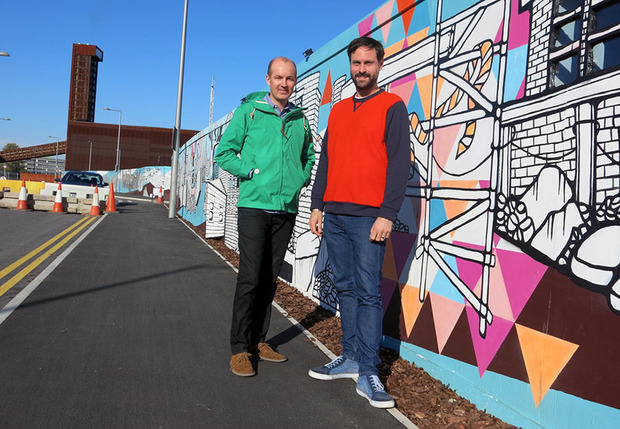
Hackney Wick was long the neighborhood of choice for artists and other creatives, thanks to cheap studio spaces in the former industrial area, which was known for its “Fridge Mountain” of discarded domestic appliances. Today it’s been gentrified and developed, but the area’s creative vein still runs deep, and Living Walls merges from that history with the new green space. Moniker Projects pitched for the project and was up against some “pretty weighty organizations,” Moniker co-founder Kristophe Hofford says, but won the commission because of its collaboration with local communities.

Together with Create London, Moniker commissioned artists including Jo Peel, Ben Eine, Mark McClure and David Shillinglaw to create artworks to hide the hoardings still surrounding the Queen Elizabeth Olympic Park. Stretching over two kilometers, it’s an impressive feat by the artists—and a beautiful display of outdoor art. The pieces were made in Moniker’s workshop in Waltham Forest beginning in November 2013 and put up throughout the year. The project is now complete and can be seen by the public. “I like how the whole thing feels interactive and that you can sort of feel like it’s part of the already rich tapestry of Hackney Wick,” says Jeanie Annan-Lewin, who’s lived in the area for four years and whose favorite is the “Your Ad Here” piece by various artists. Annan-Lewin finds the artwork a natural fit for the neighborhood.
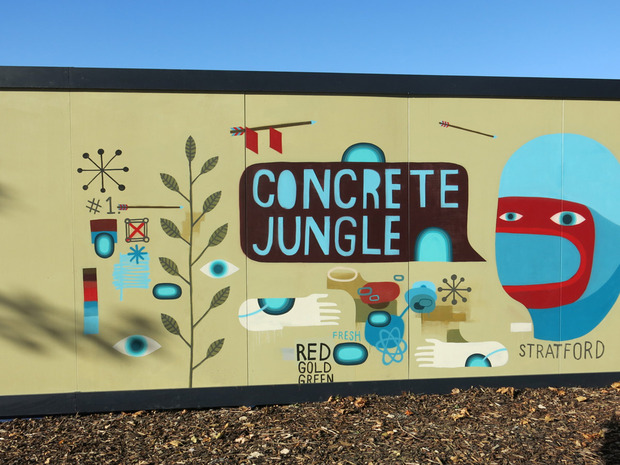
For the artists themselves, the commission was a big deal. Mark McClure, whose piece “Uphoarding” is partly made with salvaged wood from the Olympic Park and from local businesses—including wood from the film set for movie “London Fields”—thinks “it’s pretty exciting to have a part to play in the legacy of the park.” Despite it being on his doorstep, his first visits to the park were all tied up with the project. “My work is generally inspired by architectural and geometric shapes, combined with ideas of history and narrative through the use of found and recycled materials. So the wall was the perfect commission, enabling me to use wood sourced from both the Olympic Park itself and the surrounding communities. The ten key pieces hint at themes of motion and the environment, combined with the structural shapes of East London buildings.”
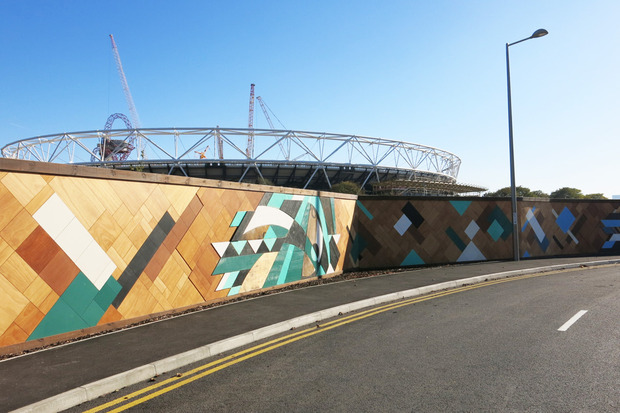
He has had overwhelmingly positive feedback to “Uphoarding” and describes the experience as fantastic. “The process of planning and realizing the ideas behind a project of this scale with everyone involved has opened a whole new way of working for me. Definitely something I’d like to do more of!”
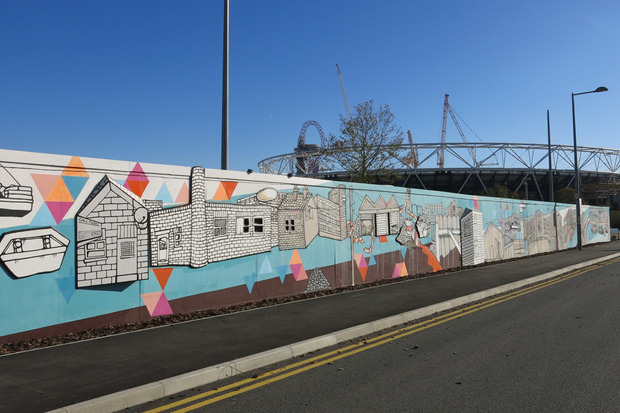
It’s a love story, as much about the love for a place as for another person.
Jo Peel’s wall makes use of her signature cityscapes and includes local landmarks in both two and three dimensions. Having watched the Olympic Park and stadium being built, Peel said it was “great to be asked to work in the space. I had been photographing the area and watching the concrete being poured from Hackney Wick so it was interesting to get to be on the other side of the wall.“ She points out how the area has changed as prices in Hackney Wick have risen, adding: “It’s difficult to maintain a community in a place of such flux, but I wanted to reflect the identity of Hackney Wick in my mural. With so many buildings due for demolition it will be interesting to see how many of the images I have chosen become history during the next five years.” Peel is perhaps best known for her animations and she created, “Meet Me in the City,” for the mural that “follows a message, lost in the ever-changing city. It’s a love story, as much about the love for a place as for another person.”
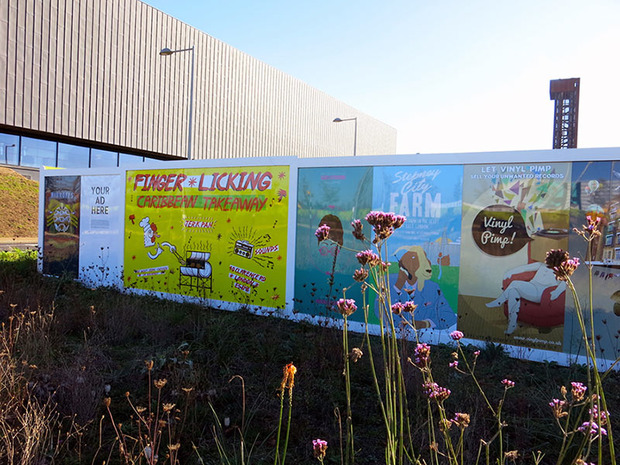
The walls created by individual artists are complemented by the “Your Ad Here” walls, which feature ads for local independent businesses made by local artists, in keeping with the park’s community-centered ethos. Put together, the “Living Walls” project reads like a love letter to what the area used to be, but also a link to what it will eventually become.
Images by Cajsa Carlson










